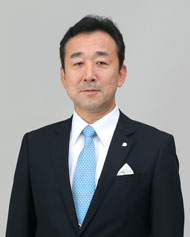Environmental Report 2017
- 1 / 21
- Next
Building a More Sustainable Society
Environmental Management
It is no exaggeration to say that hardly a day goes by when one does not hear about growing environmental risks. Abnormal weather is intensifying, generating heat waves in some places and heavy rain and snowfall in others. Forest fires, floods and other forms of ecological destruction are quick to follow.
International efforts to tackle these risks have been gathering steam, especially in the last two years. The Sustainable Development Goals (SDGs) were adopted at the United Nations Sustainable Development Summit, the Paris Agreement was concluded, and the EU RoHS Directive was revised. At the JAE Group, we are working harder than ever to help with the fight against climate change and renewing our commitment to respecting the natural environment and preserving biodiversity.
As a corporate citizen that benefits from the global environment, the JAE Group is not only reducing the environmental impact generated by its business activities, but also contributing to a prosperous, sustainable society by delivering products that support our customers’ environmental-related businesses.

Tsutomu Onohara, President
Environmental Activities
We pursue environmental management under the rubric of our corporate social responsibility (CSR) initiatives. We comply with relevant laws and regulations and fully account for the environmental impact of our business activities. Society expects us to take basic initiatives, such as eliminating pollution, as well as to help solve environmental challenges facing the natural world, including climate change and preservation of biodiversity. The JAE Group has defined the issues it will address under its environmental policy and is working hard to achieve these goals.
With regard to the fight against climate change, the use of energy has a huge impact. In initiatives to date, we have installed LED lighting and adopted efficient air conditioning equipment at newly constructed plants. At existing plants, we have steadily converted to energy-efficient equipment and switched to LED lighting for guidance illumination, along with other measures. In addition, we have taken steps to streamline energy use by raising the efficiency of production processes, from production to distribution, enhancing insulation, expanding joint pickup and delivery, and pursuing modal shift.
Among the other environmental initiatives we have taken to reduce the Group’s overall environmental impact are ensuring thorough adherence to environmental regulations, promoting green procurement, designing eco-friendly products, and comprehensively working to reduce chemical substances and waste materials.
Key topics I would like to address are our green procurement and water resource management. In green procurement, we have been selecting and procuring, from the product design state, materials and parts that contain fewer harmful chemical substances, based on the RoHS Directive and REACH regulations, so that we can be sure the products we manufacture are friendly both to people and the environment. Under the EU RoHS Directive, four phthalates were added to restricted substances in June 22, 2015, and these rules will go into effect July 22, 2019. Because these added substances are contained in the materials used in several products and equipment, the JAE Group reviewed materials, equipment, processes, and methods of managing these together with its suppliers, and is working toward full compliance by April 2018.
Concerning water resources, responding to SDG #6, “Ensure access to water and sanitation for all,” we conducted water risk assessments at production sites. Notably, as a production base in Japan that faces a “virtual water” problem, we launched new programs aimed at ensuring sustainable water usage.
With the 2015 revision of the international standard for environmental management, the concept of environmental protection was expanded to include the protection of biodiversity and ecosystems. The JAE Group Forest, established in 2004 as a symbol of environmental management, is positioned as a secondary forest (satoyama) that serves as a CO2 absorption source that contributes to a carbon neutral society (a balance between CO2 emissions and absorption) and a watershed replenishment source that benefits the Akishima Plant. We are striving to develop the environmental awareness of our employees by providing hands-on learning opportunities to be involved in forest preservation activities at the JAE Group Forest. I would like to develop these programs as a cornerstone of JAE’s future environmental activities.
The JAE Group will strive to balance both corporate activities and environmental protection by practicing environmentally friendly manufacturing.
In closing, please let me request your continued understanding and support.
Tsutomu Onohara
President
- 1 / 21
- Next